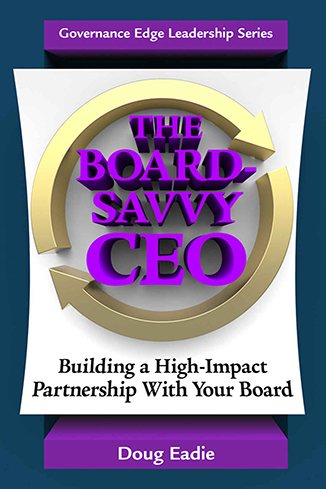 Building and maintaining close, positive, productive, and enduring working relationships with key internal and external stakeholders is now widely recognized as critical to a chief executive officer’s success and professional longevity at the helm. Nathan Ohle, the new President and CEO of the International Economic Development Council (IEDC), couldn’t agree more, as you’ll learn from the video interview Nathan and I recently recorded. During his first three months or so at the helm of IEDC, Nathan has made cementing highest-stakes relationships a top priority, starting with every CEO’s preeminent stakeholder, the Board of Directors.
Building and maintaining close, positive, productive, and enduring working relationships with key internal and external stakeholders is now widely recognized as critical to a chief executive officer’s success and professional longevity at the helm. Nathan Ohle, the new President and CEO of the International Economic Development Council (IEDC), couldn’t agree more, as you’ll learn from the video interview Nathan and I recently recorded. During his first three months or so at the helm of IEDC, Nathan has made cementing highest-stakes relationships a top priority, starting with every CEO’s preeminent stakeholder, the Board of Directors.
Unfortunately, even these days, I frequently encounter nonprofit and public chief executives who fail to recognize that one of their top priorities when they take the helm of a new organization is building a solid working relationship with the board. Reflecting on my recent interview with Nathan this morning, I was reminded of a coaching session I conducted with the CEO of a local development corporation in the Southeast around six months ago. She’d called me a few weeks earlier, distraught at the rapidly eroding working relationship with her 15-member board of directors 9 months into her first year at the helm. In the first half-hour or so of our day together, it was obvious that poor organizational performance hadn’t soured her relationship with the board. The targets set in the annual operating plan were being achieved – and actually exceeded in the tremendously important area of job creation. Nor was her oversight of key areas such as financial management and budget development the culprit. No one was questioning her managerial competence.
What, then, was the problem? It turned out to be her inattention to managing the human dimension of her relationship with the board. It was obvious she wasn’t treating the board as her preeminent stakeholder and aggressively building her working relationship with her new board. She wasn’t spending nearly enough time interacting with her board chair and other officers. She hadn’t made any attempt, for example, to get to know them well enough to adapt to their various communication styles. She hadn’t made any effort to understand the return they individually hoped to realize on their investment of precious time and energy in their work on the board. She hadn’t given a minute’s thought to practical ways she might provide her chair and the other officers with ego satisfaction, such as sharing the podium at chamber luncheon meetings. And where the whole board was concerned, she hadn’t recognized the need to design processes for meaningfully engaging board members, and providing them with a richly satisfying governing experience in, for example, the annual operational planning/budget preparation process. Fortunately, my client was an avid learner who was able to repair the frayed relationship with her board, but, sad to say, I still encounter CEOs who fail to master the art of building a solid relationship with their highest-stakes, highest-priority stakeholder, all too often being sent packing as a consequence.
There’s no chance that Nathan Ohle will become the unwitting victim of inattention to stakeholder relations. The listening tour that Nathan describes in our interview is a sensible first step in the relationship building process. Beginning inside IEDC, he has been spending significant time meeting one-on-one with his Board Chair and other Board officers and working his way through the whole Board roster. His guiding rule for these meetings? Mainly listen and learn and except for occasional questions, keep quiet. As he explains in our interview, his listening tour will extend to IEDC staff and, eventually move outside to leaders of key external stakeholder organizations, such as Federal departments and sister associations.





